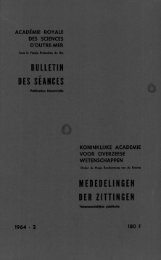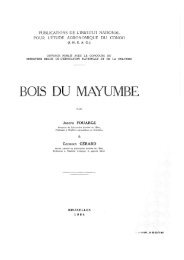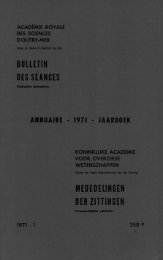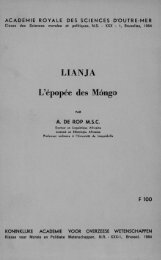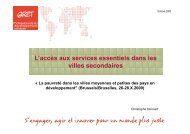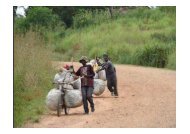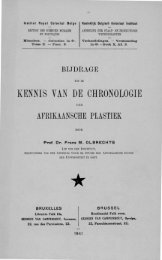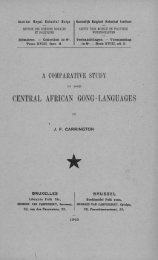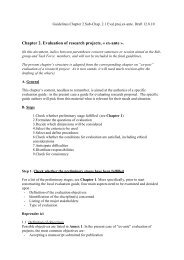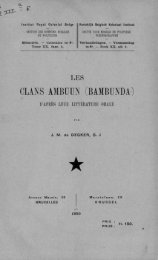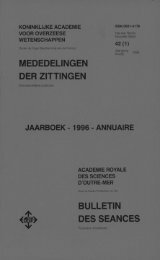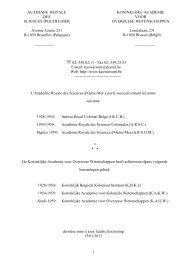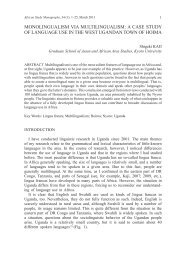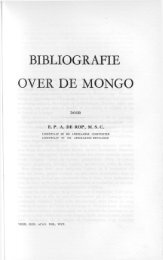(1973) n°3 - Royal Academy for Overseas Sciences
(1973) n°3 - Royal Academy for Overseas Sciences
(1973) n°3 - Royal Academy for Overseas Sciences
Create successful ePaper yourself
Turn your PDF publications into a flip-book with our unique Google optimized e-Paper software.
— 513 —<br />
hour. The sporozoites are then inoculated intravenously into<br />
an animal. In human experiments, we felt it was safer to infect<br />
by mosquito bite, although sometime this involved 500 or more<br />
bites on a single occasion.<br />
Another important technical point is the use of a suitable<br />
mosquito vector. For example we went to Borneo a year ago<br />
to carry out experiments on malaria parasites of the orangutan<br />
in order to take advantage of a special colony of A. bala-<br />
bacensis maintained there. This is the species which we thought<br />
would prove to be the best vector. The North American workers<br />
( C o l l in s et al. 1971) in Chamblee, Georgia had previously<br />
shown that it was ideal <strong>for</strong> the transmission of various « difficult<br />
» malaria parasites, including P. hylobati of the gibbon and<br />
P. brasilianum. I cannot describe the work in detail, but will<br />
only mention that instead of a single species (P. pit bed),<br />
we ( G a r n h a m et al. 1972) found a second and new species<br />
(P. silvaticuvi) in the orang-utan. W e succeeded in transmitting<br />
the latter to a splenectomised chimpanzee which we had taken<br />
with us from England (together with another chimpanzee and<br />
2 Aotus monkeys which failed to become infected), and in<br />
its liver demonstrated the tissue stages of the parasite ( K il l ic k -<br />
K e n d r ic k et al. 1972).<br />
But to go back to the human malaria parasites: W e naturally<br />
wished to complete knowledge of the life cycle of the<br />
two remaining ones — P. ovale and P. malariae, but these<br />
presented problems: P. ovale is rare and P. malariae is notoriously<br />
difficult to get into mosquitoes.<br />
I shall describe the research on P. ovale in a little detail as<br />
it shows the problems we were up against. W e asked the London<br />
and Liverpool Hospitals of Tropical Medicine to look out <strong>for</strong> P.<br />
ovale and in 1953, received news that a Roman Catholic priest<br />
from Liberia had been admitted into hospital in Liverpool with a<br />
heavy infection of the parasite and was being kept untreated.<br />
Two blood passages were made and some of the blood of the<br />
third patient was sent to London where it was inoculated<br />
intramuscularly into myself. After 13 days, parasitaemia arose<br />
and was accompanied by tertian fever. The blood was watched<br />
<strong>for</strong> the appearance of gametocytes but few ware produced;<br />
nevertheless, 110 Anopheles atroparvus and A. gambiae were



